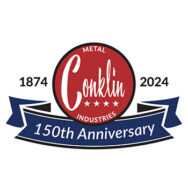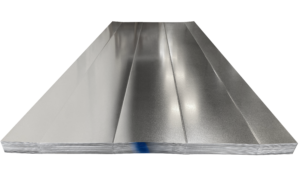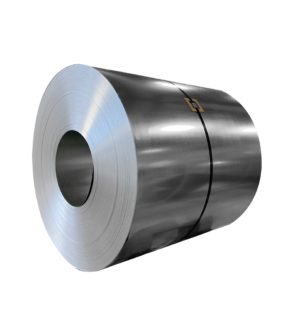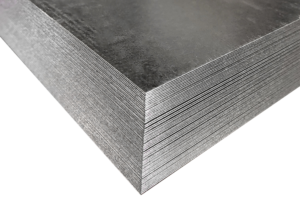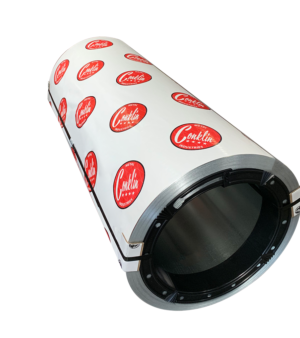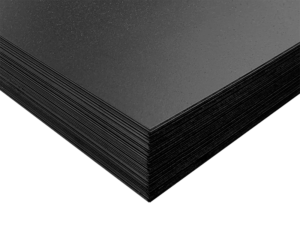Galvanized steel is cold-rolled carbon steel with a zinc coating on either side.
Hot-dipped galvanized steel is the process of dipping fabricated steel into a kettle or vat containing molten zinc. The process is inherently simple, which provides a distinct advantage over other corrosion protection methods. While the steel is in the kettle, the iron in the steel metallurgically reacts with the molten zinc to form a tightly bonded alloy coating that provides superior corrosion protection to the steel. As the strip of steel emerges from the zinc pot, air nozzles (knives) blow air to remove the excess zinc from the metal. The amount of zinc that remains on the steel (a.k.a. coating weight) is determined by two factors: the speed that the steel is exiting the pot, and the amount of air pressure blowing from the air knives.
The typical coating weights found in the HVAC industry are G-40, G-60 and G-90. The majority of our stock is G-90. This designation means that there is .90 ounces of zinc/foot or .45 ounces on each side of the steel. As we go to G-60 and G-40 there is less zinc coating on the steel and therefore becomes less corrosion-resistant.
We stock 10 gauge through 30 gauge in various widths (mainly 36”, 48”, and 60”) and lengths (including 8’ & 10′ sheets, as well as 5m and 10m# coils). The gauge refers to the thickness of the steel. (The higher the gauge number, the thinner the material)
Hot-dip galvanized coatings are used on many materials from electric utility to artistic sculptures. Ranging in size from small parts such as nuts, bolts, and nails to large structural shapes, galvanizing is integral to North American infrastructure. Most commonly, batch hot-dip galvanizing is used in atmospherically-exposed steel in our everyday lives.
The primary uses of hot-dip galvanized sheet steel are heating and air conditioning ducts, roofing, appliances, and any general sheet metal application where corrosion resistance is important.
